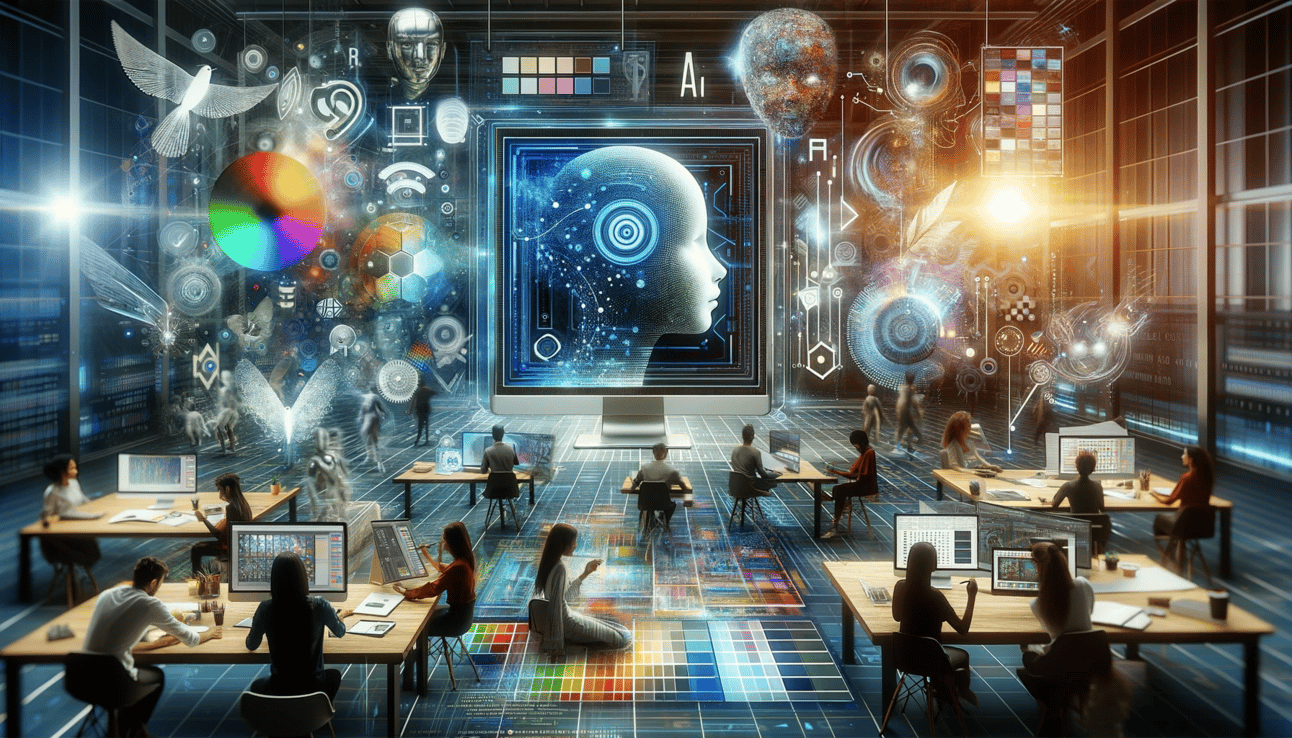- Empowering Small Business Owners with AI
- Posts
- AI Integration for Art Directors: Navigating the Benefits and Tools in the Creative Industries
AI Integration for Art Directors: Navigating the Benefits and Tools in the Creative Industries

Integrating AI and generative AI into art direction can greatly enhance productivity and creative exploration. Here's how you can leverage AI in various aspects of your work:
Idea Generation and Concept Development:
Use AI to brainstorm concepts. Input basic ideas and let the AI generate a range of concepts for you to explore.
Employ text-to-image AI models (like DALL-E) to create quick visual drafts based on your text descriptions.
Visual Asset Generation:
Generate images, backgrounds, and textures using AI-driven tools. This can be faster than manual creation or sourcing.
Create character designs or other visual elements with AI, which can be refined later by human artists.
Even in this category, there are so many tools to share with you.
A. Text-to-Image Generative Models:
DALL-E: An AI program that creates images from textual descriptions. It can be used for concept art, quick mockups, or even generating assets for storyboards.
Artbreeder: Blends images to create new ones using genetic algorithms. It's useful for creating characters, landscapes, and altering existing images to create variations.
DeepArt: Transforms photographs into artworks using the styles of famous artists through deep neural networks.
RunwayML: Offers a variety of AI models to generate, edit, and animate images and videos. It's versatile and user-friendly for artists and creators.
B. AI-Assisted Design Software:
Adobe Photoshop's Neural Filters: These filters can change a subject's age, facial expressions, and pose, which is helpful for creating different character assets quickly.
Adobe Illustrator's AI Features: Auto-trace and colorization features can convert sketches to vector art and colorize them intelligently.
Canva's Magic Resize and Design Suggestions: For quick resizing of images for different platforms and generating design ideas.
C. 3D Asset Creation:
NVIDIA's GauGAN: An AI that can convert simple brushstrokes into realistic landscapes, which can be used in 3D modeling and game design.
Autodesk's AI-assisted tools: Enhance 3D modeling workflows by predicting user actions and automating tasks in the design process.
D. Style Transfer and Filters:
Deep Dream Generator: A tool for applying intricate and dream-like transformations to images, which can be used for unique texture and pattern creation.
Ostagram: Merges the content of one image with the style of another, useful for creating stylistically consistent sets of visual assets.
E. AI for Enriching Photographs:
Let's Enhance: Boosts the resolution of images using AI without losing quality, which is essential for print quality assets.
Remove.bg: Automatically removes backgrounds from photos, allowing for easy compositing in visual layouts.
F. Generative Pattern and Texture Creation:
Patternico: An AI tool to create seamless patterns which can be used for backgrounds or textures.
Khroma: Uses AI to learn which colors you like and creates limitless palettes for you to discover, apply, and save.
Storyboarding and Prototyping:
Develop storyboards using AI to quickly visualize scenes and sequences.
Use AI for rapid prototyping of layouts and compositions.
Style and Aesthetic Exploration:
Experiment with AI to emulate different artistic styles and aesthetics, allowing for quick style testing.
Explore color palettes and design motifs with AI assistance.
Efficiency in Workflow:
Automate repetitive tasks such as resizing images or converting them into different formats.
Employ AI for sorting and organizing visual assets based on content or style.
Collaboration and Communication:
Use AI chatbots to streamline communication within your team.
Employ AI to create presentations and pitches based on your project briefs.
Personalization and Localization:
Utilize AI to adapt content for different markets or audience segments.
Generate personalized marketing or promotional materials.
Animation and Motion Graphics:
Apply AI to assist in animating characters or elements, saving time on keyframe animation.
Use AI to simulate complex physical phenomena like water, fire, or smoke.